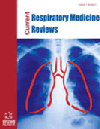
Full text loading...
We use cookies to track usage and preferences.I Understand
Apnea of prematurity is a common developmental defect affecting newborns, linked to the immaturity of systems involved in controlling breathing, particularly, central and peripheral chemoreceptors. Its severity, as well as its clinical manifestations, is inversely associated with gestational age. Symptoms of immature control of breathing progressively improve with age, with a resolution around 34-36 weeks of gestational age or 40-44 weeks in infants born at younger gestations. Prevalence seems to be higher in females and same-gender twins. The role of genetics was investigated: polymorphisms in genes encoding for adenosine receptors were associated with a higher risk of developing apnea of prematurity and bronchopulmonary dysplasia. Continuous monitoring of breathing patterns and vital signs is essential for the early detection of apnea episodes, while respiratory polygraphy shows limited utility. It is essential to treat newborns with apnea or other clinical manifestations of immature control of breathing to prevent the risk for long-term morbidities, such as bronchopulmonary dysplasia or neurodevelopmental impairment. There is no international consensus on the management of these premature infants. Nowadays, caffeine represents the first line of pharmacological treatment in association with noninvasive ventilatory support techniques. Furthermore, in the USA, doxapram is used in the case of refractory therapy with caffeine. Among nonpharmacological strategies, transfusion, prone positioning, tactile and olfactory stimulation, and kangaroo care were widely studied, but their efficacy is still unclear.

Article metrics loading...

Full text loading...
References


Data & Media loading...

